|
The Annual Wildflowers of the South East of
Ireland
Cornflower
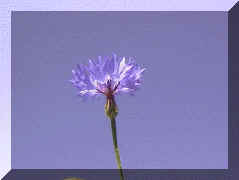
The bright blue Cornflower was once a common sight in the countryside through the months of July, August and September. In the past it grew as a weed in fields of corn on light soils and was very plentiful -
sadly, it is now on the edge of extinction except for a population found on the Aran Islands
and in Wicklow.
The Cornflower has many cultivated relations, and these are very popular as fresh cut and dried flowers. Cornflower is proven to help grain grow due to root secretions and is now used as a beneficial weed in some USA grain crops. In 1992
Design By Nature saved the Irish Cornflower from extinction. However pollen
from garden strains of cornflower effected the crop in 1998 and the breeding
program had to be restarted again.
Corn Marigold
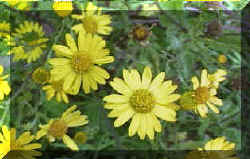
The Corn Marigold is a beautiful rich yellow flower that can still be found occasionally in arable fields. When it is present, it is usually in large quantities, and the golden flower-heads create a stunning
display. The whole plant is fragrant and it is possible to distil a perfume from it. Corn marigold is sometimes known as the kissing plant as it is oil is said to cause passion and soften the lips.
Corn Poppy
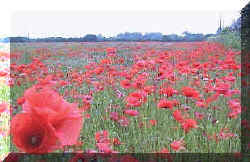
This piercingly red flower is to be seen from July right through to October. Poppies crop up mysteriously where they have not been seen for years, puzzling many people who can't figure out where they came from. The
answer is with the seed which can remain in the soil for over one hundred years, and then flower when the ground is disturbed. The Poppy is well known all over Europe, its native home. It was introduced to Ireland from Europe over three
thousand years ago when stone age farmers travelled to make a new home in Ireland. They brought with them grain seeds to cultivate as food crops, and mixed in with the grain was the Poppy.
Redshank
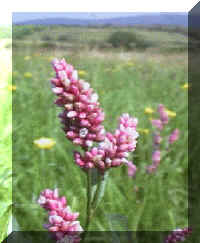
The Redshank
is very common and familiar to everyone. Its red and pink and white flowers appear in late summer and produce large quantities of seed - small birds will flock to clumps of Redshank to feed on this
nutritious food in autumn. Redshank grows on acid to neutral soils that hold moisture for most of the summer. Not to be confused with knotweed.
Catchfly
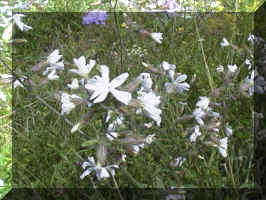
Catchfly
can be seen on arable ground flowering in the months June to August.
This Campion species is a favourite food plant of a number of moth species. One of these, the Campion Moth, lays its eggs in the seed
head, where the newly hatched caterpillars have access to the nourishing seeds. There are many
Campion species in Ireland the catchfly being uncommon and mainly found in the
South East.
Corn mint
Corn mint
can be seen and smelt occasionally in damp arable fields. The flowers are light blue and are found all along the upright stem. The most notable feature of this plant is its aroma - the fresh
mint smell is present right through the growing season. The plant is edible and can be eaten fresh or dried . The leaves can be infused in hot water to make a refreshing tea which is
beneficial to the digestive system.
Corn Chamomile
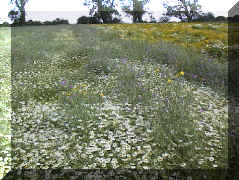
Corn Chamomile
is now extinct, once a
flower of the cornfields of Ireland, this species suffered as herbicides and
new methods of cultivation arrived in Irish Farming. A tough wiry species with
seeds that the birds adore. Chamomile will form large colonies of July -
August flowering daisy heads.
Corn Cockle
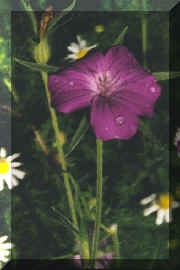
Corn Cockle is another extinct species,
eradicated because its seeds, if digested by cattle or humans will cause indigestion
and worse. A tall glaucous silver green weed with a beautiful purple flower
that waves in the wind. The seed is black, and held in an attractive capsule.
Scarlet Pimpernel
The Scarlet Pimpernel
can be seen growing on any freshly disturbed ground. Its former stronghold, the cornfield, has become more hostile due to the use of chemicals in agriculture, so this intrepid little plant
has found a new stronghold - your garden ! Its red flowers trail along the ground on low growing stems. Look out for the occasional blue version !
Sun Spurge, a once common species now facing localised extinction.
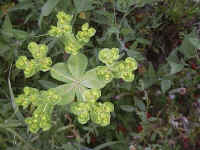 The
plant family Euphorbia are dangerous plants as they contain a white sap which
can burn if it gets into your eyes. The
plant family Euphorbia are dangerous plants as they contain a white sap which
can burn if it gets into your eyes.
|